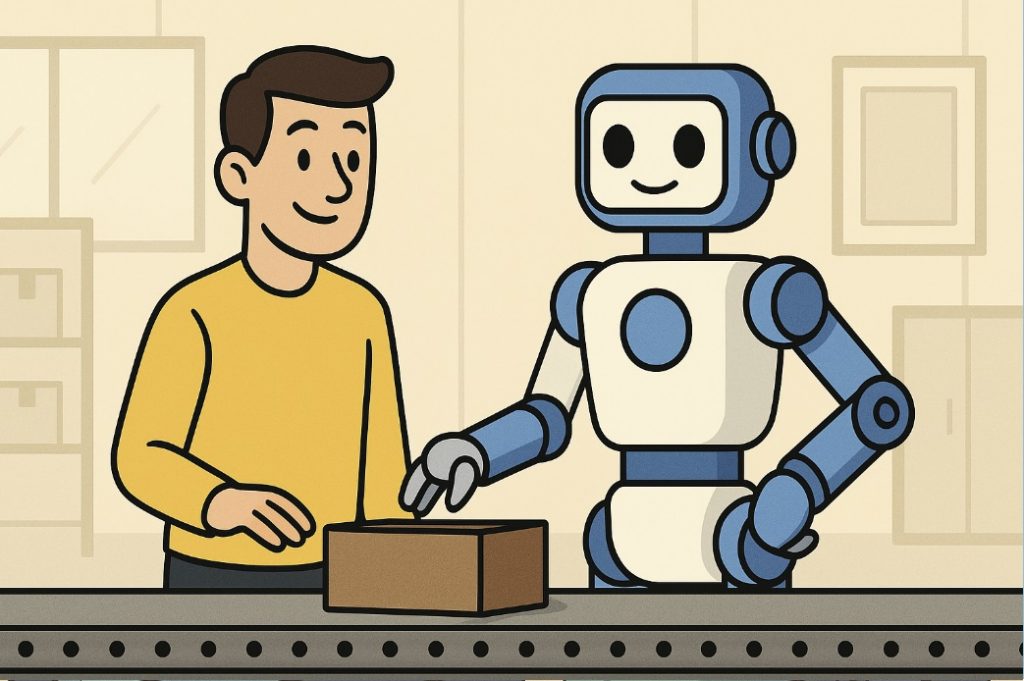As automation transforms the modern workplace, a new class of machines is emerging to work with humans rather than instead of them. These are collaborative robots, or cobots—advanced machines designed to share workspace and tasks with people in a safe, flexible, and intelligent way. But what sets cobots apart from traditional robots, and why are they changing the future of manufacturing and service industries?
What Are Collaborative Robots?
Collaborative robots are robotic systems that can operate alongside humans without physical barriers. They’re typically equipped with sensors, cameras, and safety features that allow them to detect human presence and adapt their behavior accordingly.
In contrast, traditional industrial robots are often large, powerful, and fenced off from human workers to prevent injury. They operate in isolation, performing repetitive, high-speed tasks such as welding, painting, or assembly.
Key Differences Between Cobots and Traditional Robots
| Feature | Collaborative Robots (Cobots) | Traditional Industrial Robots |
|---|---|---|
| Human Interaction | Designed to work safely alongside people | Operate in fenced-off zones |
| Size and Power | Lightweight, slower, safer | Large, fast, powerful |
| Programming | Easy to program (often with drag-and-drop UIs) | Complex programming required |
| Flexibility | Adaptable to different tasks and spaces | Usually fixed to specific tasks |
| Safety | Built-in force and proximity sensors | Safety depends on isolation |
| Cost and Deployment | More affordable, faster to deploy | Higher setup costs, longer lead times |
Where Are Cobots Used?
Cobots are making their mark in many sectors:
- Manufacturing – Assisting with assembly, packaging, or quality checks
- Logistics – Working in warehouses for picking and sorting
- Healthcare – Helping in rehabilitation, lab automation, and even surgery prep
- Agriculture – Supporting harvesting or plant monitoring
- Education and Research – Teaching robotics and conducting experiments
Benefits of Collaborative Robots
- Improved safety without compromising productivity
- Higher job satisfaction for human workers by automating dull or dangerous tasks
- Lower barrier to entry for small- and medium-sized businesses
- Fast ROI due to low setup time and energy-efficient operation
- Reprogrammable and portable, ideal for dynamic environments
Challenges and Limitations
- Lower speed and strength than traditional robots
- Not suitable for highly hazardous or heavy-duty operations
- Requires human oversight in many cases
- Initial trust and adoption may be slow in traditional industries
Glossary
- Collaborative robot (cobot) – _A robot designed to work safely in close proximity to humans.*
- Proximity sensor – _A device that detects objects or people nearby without physical contact.*
- ROI (Return on Investment) – _A measure of how quickly a purchase pays for itself through efficiency or cost savings.*
Conclusion
Collaborative robots represent a major step forward in how we think about automation—not as a replacement for people, but as a partner in productivity. As cobots become smarter and safer, they are opening the door to more inclusive and human-friendly workplaces, where technology enhances rather than displaces human effort.


